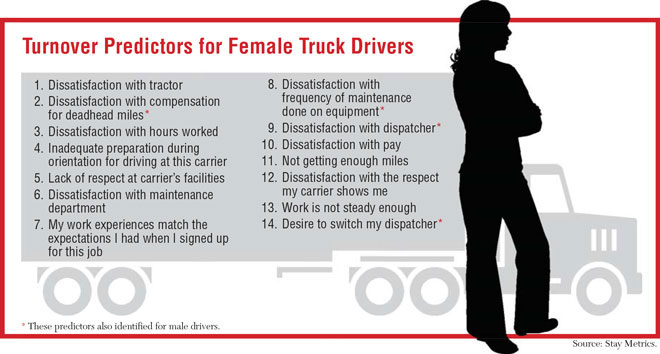Communication Helps With Driver Hiring, Retention

Finding and retaining qualified drivers can be a difficult and time-consuming task, but there are some human resources firms offering alternatives to old-fashioned interviews to get them on the road.
The driver shortage is one of the top challenges facing the industry. American Trucking Associations reported a 90% turnover rate in the second quarter and estimates there’s a need for as many as 50,000 drivers today.
One theme that recruiting professionals emphasize for getting and keeping the best people is learning about individual applicants before they are hired and communicating with them on a regular basis after joining the company.
Gathering candidate behavioral information through an online assessment survey is an efficient way to learn about a prospect, said Mark Tinney, president of Gig Harbor, Wash.-based JOBehaviors.
Tinney’s surveys feature two-part questions on actual behaviors the driver will perform on the job. A typical question will offer two possible behaviors and ask the applicant to choose the one that best fits his personality. An example for longhaul drivers is: “I make every effort to learn all my routes; I drive defensively at all times.”
The survey is completed online in about 15 minutes and sent to the client’s HR department where it is scored electronically. Each question earns a number from one to five and the total is the applicant’s score.
“The assessment offers consistent and predictive analysis of candidate behavior. The candidate that passes earns the right to take the time of the hiring manager,” said Tinney.
JOBehaviors’ clients in the carrier sector use its assessments for longhaul, shorthaul, delivery and bus drivers, along with diesel technicians and dispatchers.
Carriers also want to ensure the best staff stick around.
Communicating with people is the most important part of the relationship.
Jane Jazrawy
South Bend, Ind.-based Stay Metrics focuses on training and retaining the best drivers, combining its expertise in behavioral psychology and organizational culture to create a rewards and recognition platform for drivers.
It offers seven-day and 45-day onboarding surveys for new drivers who identify early expectations, experiences and satisfaction levels. Those surveys are valuable because one-third of new drivers leave in the first 90 days, according to Stay Metrics CEO Tim Hindes.
The surveys cover topics like pay and equipment, and responses are compared to results from other carriers, so peers can determine how they stand industry-wide on issues like compensation.
The Driver Match program uses surveys to match up new drivers with trainers and managers. Hindes wrote in September that “drivers with a low satisfaction with their dispatcher (driver manager) leave at a 72.3% rate in the first three months on the job. Meanwhile, drivers with high dispatcher satisfaction leave at a 27.7% rate in the same time.”
This year, Stay Metrics took a look at female drivers as part of its annual survey on driver retention. Women made up about 9% of the 12,502 drivers from 78 different carriers that responded.
The survey found 14 turnover predictors for women, topped by dissatisfaction with the tractor, hours worked, compensation for deadhead miles and the maintenance department.

Another firm offering online driver training, testing and tracking is CarriersEdge in Markham, Ontario, which counts over 600 carriers using its system.
In 2008 it teamed with the Truckload Carriers Association to launch in the United States the Best Fleets to Drive For campaign, which includes an annual survey and contest identifying the best workplace experiences for drivers.
Each year, it collects thousands of driver satisfaction surveys, said CarriersEdge CEO Jane Jazrawy. Pay is important but driver satisfaction is determined more by carrier communication, or lack of it, she said.
“Communicating with people is the most important part of the relationship. The top fleets are consistent, they do what they say they will do,” said Jazrawy. “They make sure their drivers are heard and the driver has an avenue to communicate. They ask their drivers about job issues and they take their opinions seriously.”






